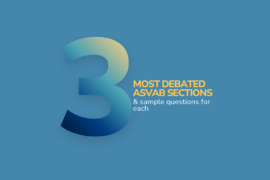Getting ready to take the TOEFL? Try these sample TOEFL test questions to get a sense of what the exam is like and see where to focus your study efforts. Answers are provided at the end of all the questions.
Reading Comprehension
Read the passage and choose one answer that best responds to each question below. Answer the questions based on information that is stated or implied in the passage.
The Amish, a denomination of Anabaptists, are known for their religiosity and for their social isolation. Not to be confused with Mormons or Mennonites, the Amish live primarily in the United States and Canada, with significant concentrations in Pennsylvania and Ohio. A subculture, the Amish largely shun the mores and folkways of modern society in favor of a way of life that they deem suitable.
Amish lifestyle can vary from one Amish community to the next; each community must follow its particular Ordnung, or Amish rules of living. The word is German (meaning “order”), reflecting the strong Swiss-German ancestry of the Amish. Though lifestyles can fluctuate across Amish communities, there are shared features of Amish lifestyles across the board. Specifically, all Amish isolate themselves from modern culture, maintain religious devotion, dress and behave in a modest manner, work hard, and consider the man as the dominant figure in the family. Probably the most famous attribute of this lifestyle is the general absence of technology, such as electricity and automobiles. However, in some Amish clusters, thoughtfully chosen types of technologies are allowed under certain circumstances, such as farming needs or that which sustains life, and does not disrupt the tradition of a simple life over one that places an individual’s pining for possessions over one’s community. Technology is not what Amish communities fear, but the vanity and lack of humility that often results from consumerism. The Amish regard such traits with distaste, as ego and pride clash directly with their religious beliefs, which value humility and community.
Determined to uphold these beliefs, along with their desire to maintain negligible contact with non-Amish, the Amish educate their young outside of the American public school system. American public schools, aside from exercising the palpable modern practices that the Amish shun, value autonomy and individual thinking, both of which go against the core of Amish philosophy. As a result, the Amish prefer to use schoolhouses within their communities, run by their own, maintained by their own, and attended by their own. Amish children are not educated beyond the eighth grade, as any more education is not pragmatic for farm life, and could even rouse ambition and greed in the young. Such education, like much of American society at large, is viewed as a threat to the way of life and the values that the Amish work hard to preserve. Though much of their culture is misunderstood and often attacked, most Amish families are content with their protected way of life.
1. The Ordnung is:
(A) the Amish rules of living
(B) a town in Pennsylvania with a large Amish population
(C) a religious sect within the Amish community
(D) the history of the Amish in America
2. According to the second paragraph, many Amish communities do not use technology because:
(A) they believe all technology is evil
(B) they fear electricity
(C) it can often result in individuals expressing materialism and pride
(D) their religious beliefs prohibit it
3. The third paragraph presents all of the following as reasons why the Amish don’t educate their children within the public school system EXCEPT:
(A) they don’t want to have too much contact with non-Amish people
(B) public schools often use modern practices and technology
(C) public schools encourage individualism
(D) other children would tease Amish children
Structure and Grammar — Part I
For the Error Identification questions, each sentence contains four underlined words or phrases. Select the one word or phrase that must be changed in order for the sentence to be correct.
1. Last night, the director [A] finally wins [B] the award, after being nominated [C] more than [D] five times.
(A) director
(B) wins
(C) being nominated
(D) more than
2. Despite [A] Ed’s threats of punishments [B], none of his sons were [C] willing to help [D] him mow the lawn.
(A) Despite
(B) punishments
(C) were
(D) to help
Structure and Grammar — Part II
In the Sentence Completion questions, one or more words are left out of each sentence. Under each sentence, you will see four words or phrases. Select the one word or phrase that completes the sentence correctly.
1. Juan quietly watches the bird _____ perches on his windowsill so he won’t scare it away.
(A) that
(B) who
(C) which
(D) whom
2. Walking along the side of the road, ______.
(A) the car nearly hit me as it went by
(B) I was nearly hit by a car as it went by
(C) the car, which nearly hit me, went by
(D) it was the car that nearly hit me as it went by me
TOEFL Answers
Reading Comprehension
1. The correct answer is (A). The first sentence of the second paragraph states that the Ordnung is the term for the Amish rules of living: “each community must follow its particular Ordnung, or Amish rules of living.”
2. The correct answer is (C). The second-to-last sentence of the paragraph states that “Technology is not what Amish communities fear, but the vanity and lack of humility that often results from consumerism.” Also, the sentence preceding that one indicates that the Amish may use some technology when necessary (which eliminates choice D) but they don’t want technology to cause an individual to value possessions over community. Therefore, many Amish communities do not use technology because it can often result in individuals expressing materialism and pride.
3. The correct answer is (D). Nothing in the paragraph suggests that the Amish don’t send their children to public school for fear of them being teased. The paragraph doesn’t mention anything about how the actual children in public schools would interact with Amish children. Choices A, B, and C are all supported by the paragraph.
Structure and Grammar — Part I
1. The correct answer is (B). The verb “wins” is in the wrong tense. The phrase “last night” indicates that the action took place in the past, so the verb should be the past tense “won.”
2. The correct answer is (C). The sentence contains an error in subject-verb agreement. The subject of the verb “were” is the singular “none,” not the plural “sons.” Therefore, the verb should be the singular “was.”
Structure and Grammar — Part II
1. The correct answer is (A). The correct pronoun to use is “that” because the pronoun is referring to a specific bird. “Who” and “whom” are only used to refer to people. “Which” is used to set off extra or unnecessary information.
2. The correct answer is (B). The first noun that comes after the given clause is modified by that clause. Choice B is the only choice that completes the sentence without creating a misplaced modifier. The phrase “walking along the side of the road” modifies the subject “I.” Cars cannot walk, so the phrase cannot modify “the car.” The pronoun “it” is not specific enough, so the phrase cannot modify it.
Prepare for the TOEFL by building basic skills in Reading Comprehension, Vocabulary, and Writing and Grammar with these simple-to-use online sets.
Reading Comprehension
This Peterson’s practice set will help you strengthen your reading comprehension skills. Contains 3 practice sub-sets that test your reading comprehension abilities Each sub-set contains 5 reading passages and 50 total questions. Each question includes a full answer explanation
Vocabulary
This Peterson’s practice set will help you strengthen your vocabulary. Contains 20 decks of electronic flashcards; each deck has 20 cards and one vocabulary quiz. Flashcards contain words on one side and definitions on the other. Includes audio of each word and definition
Writing and Grammar
This Peterson’s practice set will help you strengthen your sentence structure and grammar skills. Includes 3 practice sub-sets; each sub-set contains 40 total questions. Features diagnostic test for your English language skills. Each question includes a full answer explanation.



